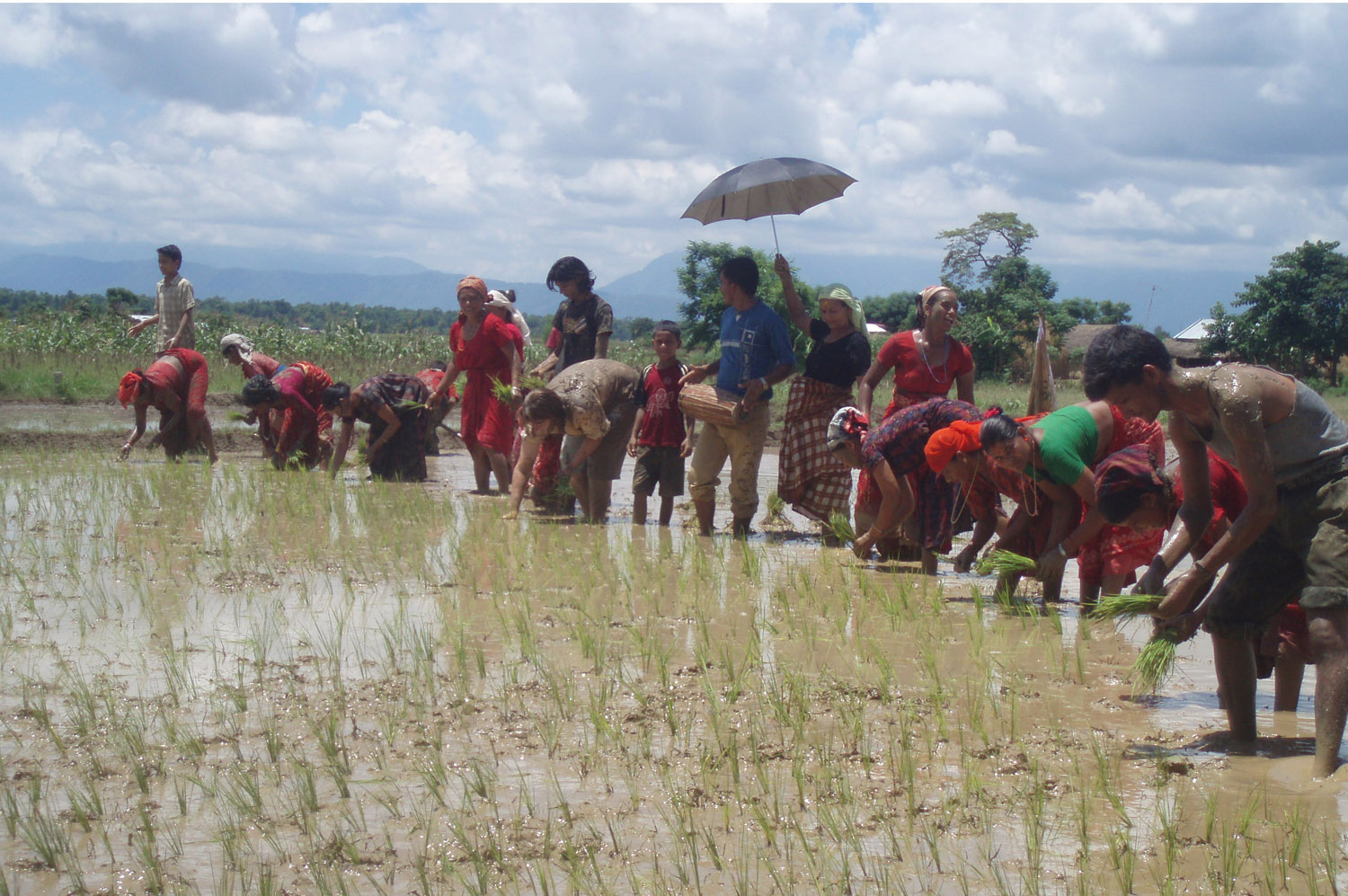Rice plantation begins from first week of Asar, or even earlier, depending upon the weather condition in various parts of the country. Eastern part sees the monsoon early so their begins the plantation earlier than the west. Asar 15 is generally regarded as the peak day and celebrated as a special occasion.
Rice is grown almost every part of Tarai region for rice is
staple food for most Nepali. Depending upon soil fertility and availability of
water, rice is grown two times a year in many areas. Rice, planted in Chait (March-April),
is harvested during Asar.
Generally monsoon rain affects the harvesting of this
rice (called Chite dhan) and hay
could not be used as fodder. While monsoon plantation, the major agricultural
activity, is yielding rice along with dry hay suitable for domestic animals,
during Kartik (October-November).
Dalbhat (lentil soup and cooked rice) is the most popular food in Nepal. We eat dalbhat two times a day every morning and evening as main course. We are so accustomed to dalbhat that no other food could make our stomach filling. People grow rice whole heartedly mainly for themselves for rice is essential for survival.
Government agencies and farmers' organizations also observe this special day as Rastriya Dhan Dibas (National Rice Plantation Day) organizing different agricultural activities to increase the rice production for the food security in the country.
Ecological Farmers' Forum and Bird Education Society have been jointly organizing the Rice Plantation Program every year to promote organic farming using natural pesticides and fertilizers.
Organizers inform people how to do the treatment of rice seedlings in EM solution (effective micro-organism) to protect them from diseases. They urge people to use compost and bokasi fertilizers in substitute of chemical ones.
Tractor and modern tools are used in most flat areas, but
traditional method of using ox to plough the land is still used in those areas
where there is no accessibility of the modern tools. Mangal Chepang of Kolar
descends down to lowland to plant rice on small piece of land at the edge of
stream that he has owned.
He generally involve in cultivating corn, millet and
buckwheat in the hills. Hill people mostly eat dhido, a sort of thick and sticky porridge made by boiling corn
flour with water. He has to bring down ox and all the traditional tools to
lowland to plant rice. He enjoys his work, "Our little effort will give us
to eat dalbhat".










Thank you for the help in essay
ReplyDeleteNepali language ma आउन्न
ReplyDeleteIn nepali word
Deletein nepali langauagae
ReplyDeletelongchamp handbags
ReplyDeleteoff white shoes
hermes
hermes online
longchamp outlet
goyard bags
curry shoes
kyrie 5 spongebob
moncler
moncler
Hello any one where from shisu niken
ReplyDeletemtefr2396ca
ReplyDeletegolden goose outlet
golden goose outlet
golden goose outlet
supreme outlet
golden goose outlet
golden goose outlet
golden goose outlet
golden goose outlet
golden goose outlet
golden goose outlet